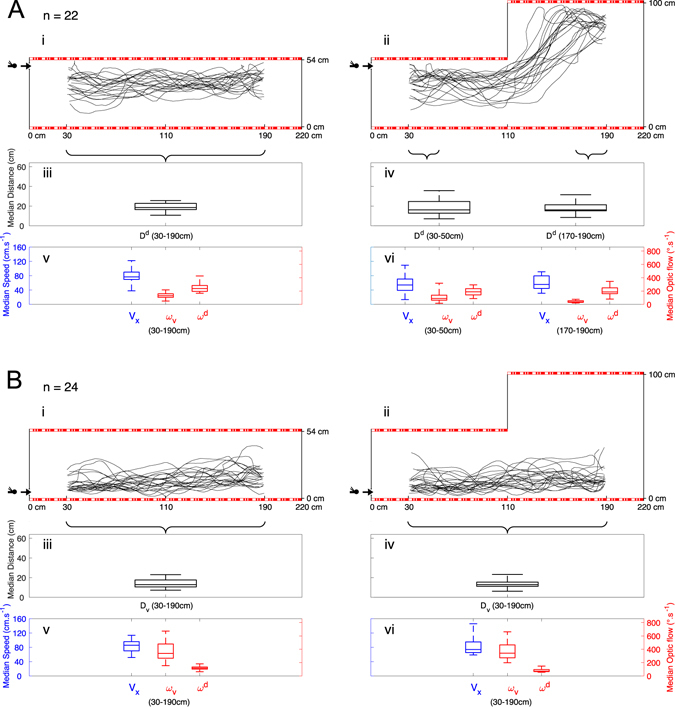Figure 1.

(A) Step 0: E Top → R Top; Steps i&ii: E Top Trajectories of honeybees (n = 22) trained to enter the tunnel via the upper entrance before being released at the upper entrance under low-roof conditions, as described in i as well as under “dorsal ditch” conditions, as described in ii. In the flight under “dorsal ditch” conditions which the bees had not previously experienced, the insects flew upward and followed the newly encountered high roof at median distances D d (see boxplots in iii and iv) which were not significantly different. Distributions of median speed v x and median dorsal optic flows ω d (see boxplots in v and vi) were also not significantly different each others. (B) Step 0: E Bottom → R Bottom; Steps i&ii: E Bottom. Trajectories of honeybees (n = 24) trained to enter the tunnel via the lower entrance before being released at the lower entrance under low-roof conditions, as described in i and again via the lower entrance under “dorsal ditch” conditions, as described in ii. In the flight under “dorsal ditch” conditions which the bees had not previously experienced, the insects flew near the floor at median distances D v (see boxplots in iii and iv) which were not significantly different. Distributions of median speed v x and median ventral optic flow ω v (see boxplots in v and vi) were also not significantly different each others. (See statistics in results and discussion sections).
